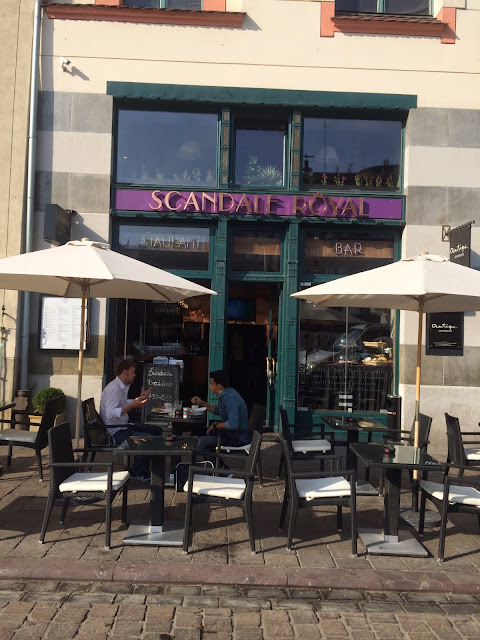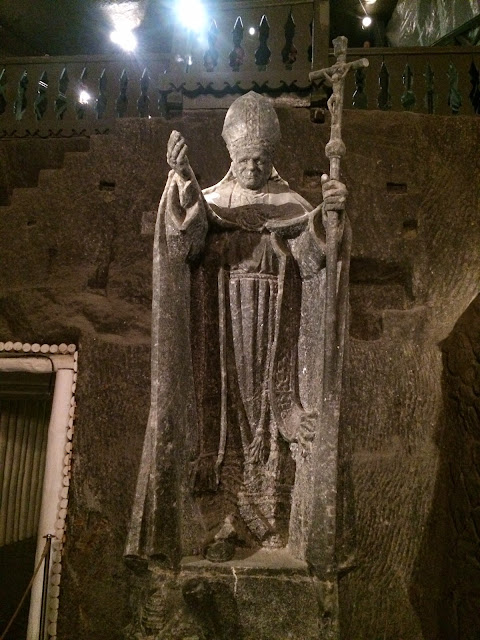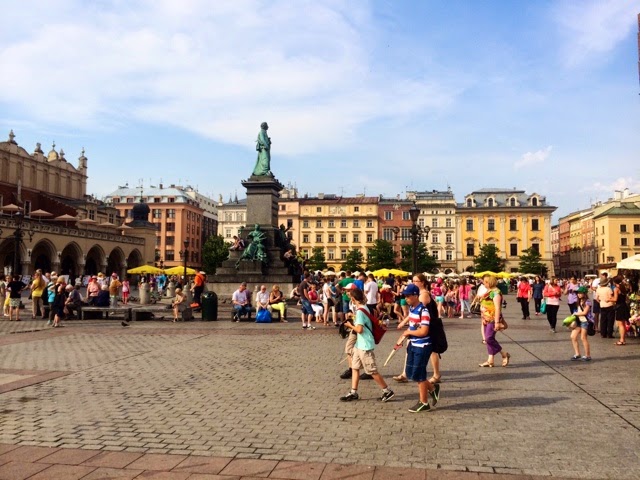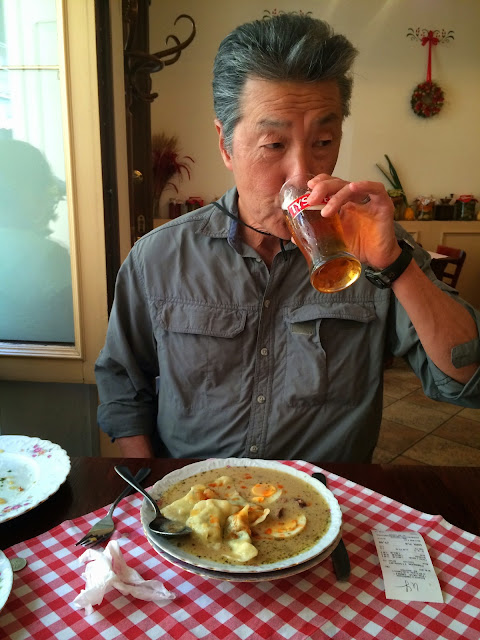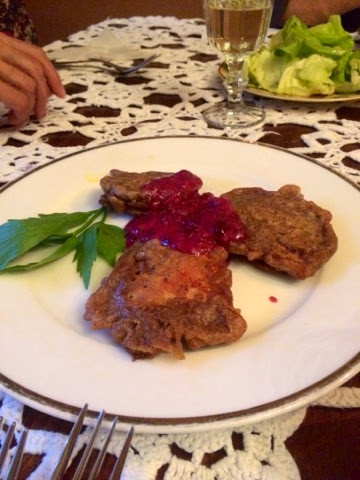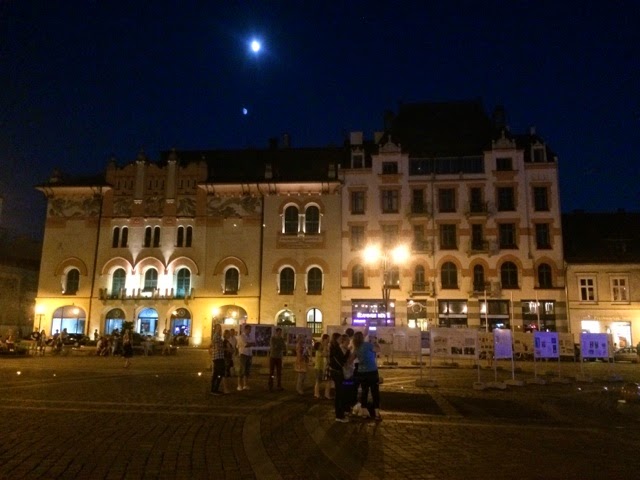Breakfast (again) at our favorite spot, the we boarded a bus for the Wieliczka Salt Mine, 10 miles southeast of Krakow.
Neolithic peoples evaporated the salt out of the many seeps and springs, but a mine was started when the seeps began to dry up and has been producing salt at least since the 11th century. In the 15C 1/3 of Poland's income came from this white gold.
Down, down, down hundreds of steps.
The express route.....no one chooses this one....
The uneducated miners carved amazing sculptures from the Salt. This tableau of St Kinga was carved in the 1700's.
The network of tunnels is supported by wooden beams (metal would rust). The wood in this pic is nearly 300 years old, preserved by the salt.
The subjects of the miner's art reflected their national and religious pride.
A little difficult to make out in my pic, the Chapel of St Kinga was carved by 3 miners, over a 30yr period in the early 20th century.
The altar in the chapel. All items (except the cloth and candles) are carved from the salt.
Pass the salt please.....
Salt crystals adorn the chandelier....
Carved figure of John Paul II, recently canonized.
I feel a bit strange......somehow lighter, happier, better...... The chapel seems to have affected me in some otherworldly way.......
Ceilings are all supported by an intricate latticework of wooden beams.
Returning from Wieliczka, we visited the Krakow Ethnographic Museum depicting life in rural Poland, including models of traditional homes, regional costumes, lifestyles, tools and holiday celebrations.
Two old neighbors guarding the 'hood...
Dome of the 11C Romanesque Church of St Adelbert....…
Oh poo, we are so boring, but we are back at Polskie Smaki or favorite local restaurant. Cheap and good, it's hard to beat.
Back at our Hotel Globtroter, we toast a wonderful trip together and plan to eat only salads for the foreseeable future (we are all going through veg withdrawal/ meat & carb overload).
Flying home tomorrow. Hard to imagine it's all over.......
Back home. We had a great trip and sampled lots of new foods, but my scale says "ouch". 5 added pounds (from the Weinerschnitzel I guess). Yes, it's gonna be small salads for the next few weeks, but it was sooo worth it!!
